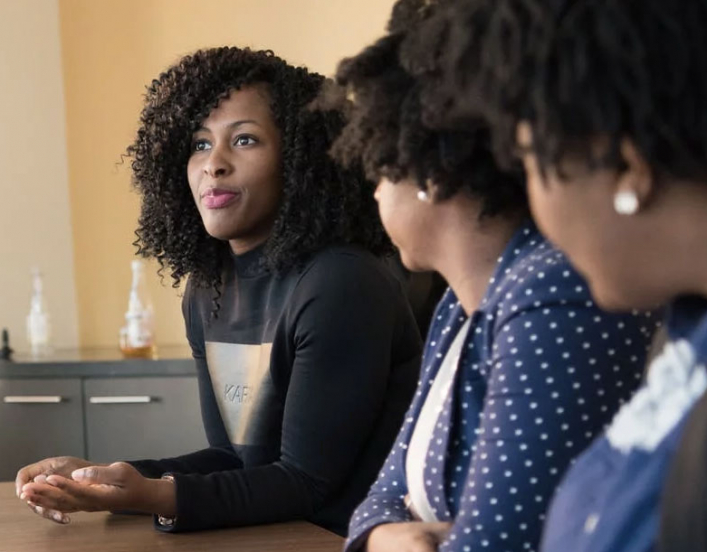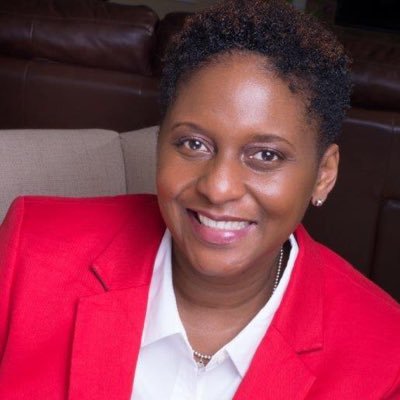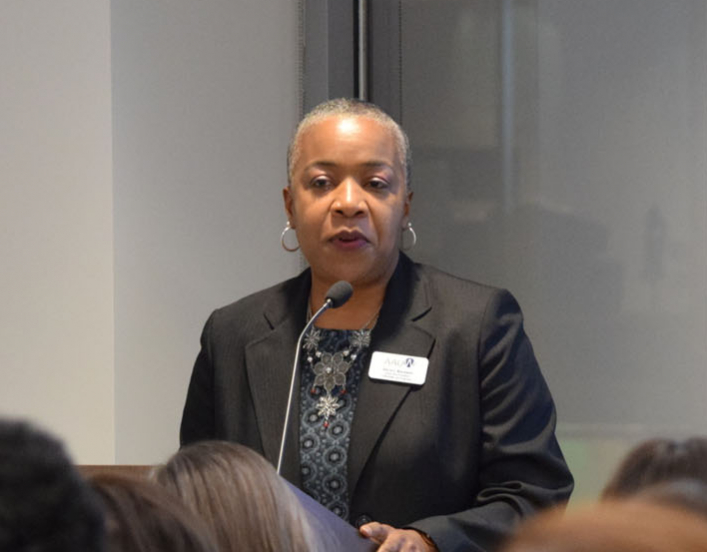Black Women in the Workplace: A Q&A with Minda Harts
Get Set for Success
“The wage gap is part of systemic racism, but one thing Black women can do is learn how to quantify our worth. Every time we have the opportunity to make an ask, we are helping chip away at the wage gap.”

In her book, The Memo: What Women of Color Need To Know To Secure A Seat At The Table, Minda Harts takes a no-BS look at the odds stacked against women of color in professional settings, from the wage gap to biases and micro-aggressions, with actionable takeaways. The paperback version of The Memo, which includes two new chapters, will come out on September 15, 2020. AAUW asked Minda to share some of the issues Black women face in the workplace.
What are the biggest obstacles Black women confront as they look to advance into leadership roles?
Many companies and organizations are heavily focused on gender equality, yet miss the mark on racial equity. Many women of color are not benefiting from initiatives that solely focus on “women.” Studies have shown that white women tend to benefit from those initiatives. The double-bind is at play for women of color. It’s almost as if there are two glass ceilings: 1) Being a woman and 2) Being a woman of color. It will take courageous leadership to address this racial gap for women.
How can white women best support women of color in the workplace?
White women fully understand the definition of being an ally, but now it’s time to put allyship into action. That will require no more “good intentions,” but tangible solutions. Some things white women can do: Attend an African-American Employee Resource Group or purchase career books written by women of color and educate yourself on issues that affect women of color. Then ask to participate in a conversation with us. One last thing to remember, women of color are not a monolith — each woman has her individual need for support.
How can Black women navigate office politics in work environments where they are just one or a few people of a marginalized group?
The power of building a strong internal squad is key. When I was the “only,” I would often feel isolated, but when I started to build relationships from the top down, I didn’t feel as alone. In addition, I had people inside the workplace who could vouch for me — which eventually led to multiple promotions.
Black women currently earn 62 cents for every dollar that white men make. What are some simple actions women can take to narrow the gap?
The wage gap is part of systemic racism, but one thing Black women can do is learn how to quantify our worth. Every time we have the opportunity to make an ask, we are helping chip away at the wage gap. Every time we don’t ask, we widen it. I realize that just because you ask for more money doesn’t mean you’ll always get it, but at least you’re working on the part of the equation that you can control.
How do you advise Black women to approach conversations about negotiating for a higher salary or asking for a raise?
It’s important for Black women to conduct research on their desired position. Negotiation is a high-stakes game, and you can’t show up unprepared. At the very least, you should know what the market rate is for the job. Having this information will set you up for success and allow you to prepare a counter-argument if you are offered a salary lower than the market rate. Also, the internal work of knowing that we are worth it to make such an ask plays an important role. Worth is so important. Once we tap into our currency, I believe we will be unstoppable at work.
Minda Harts is a writer, speaker and thought leader who frequently presents on advancing women of color, leadership, diversity and entrepreneurship. She is an assistant professor of public service at New York University’s Robert F. Wagner Graduate School of Public Service and the founder of The Memo LLC, a career development company for women of color.
Related
Black Women & the Pay Gap



